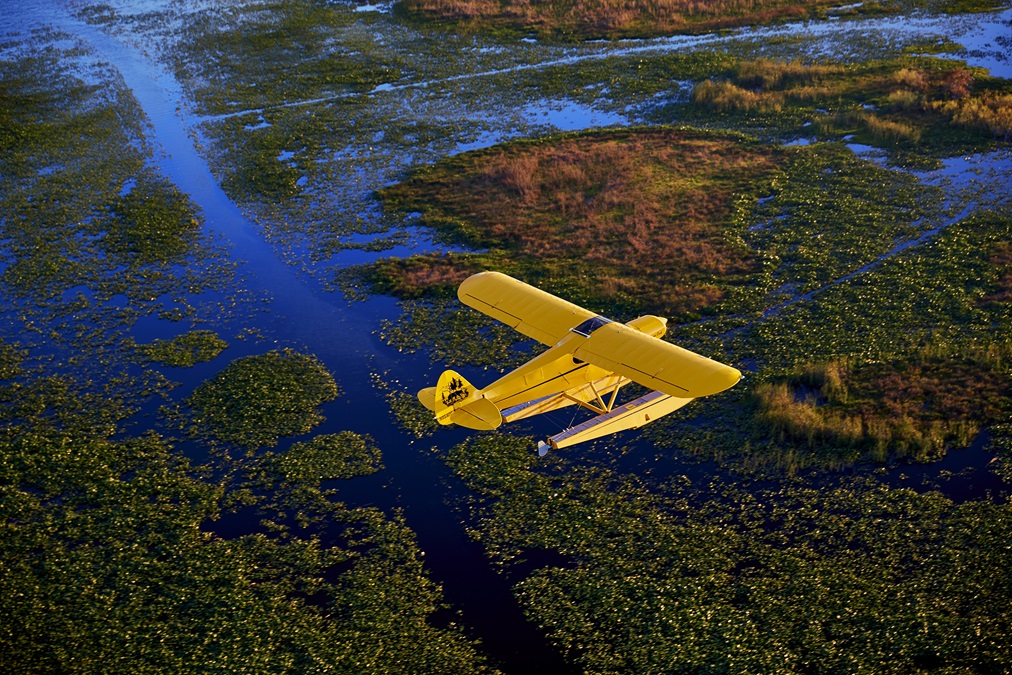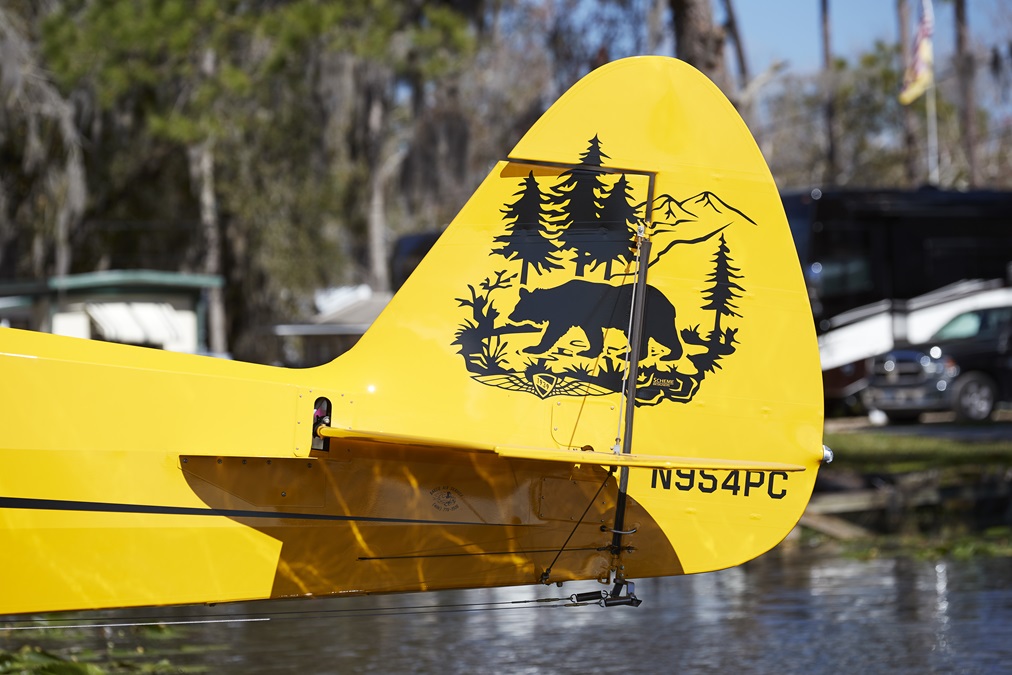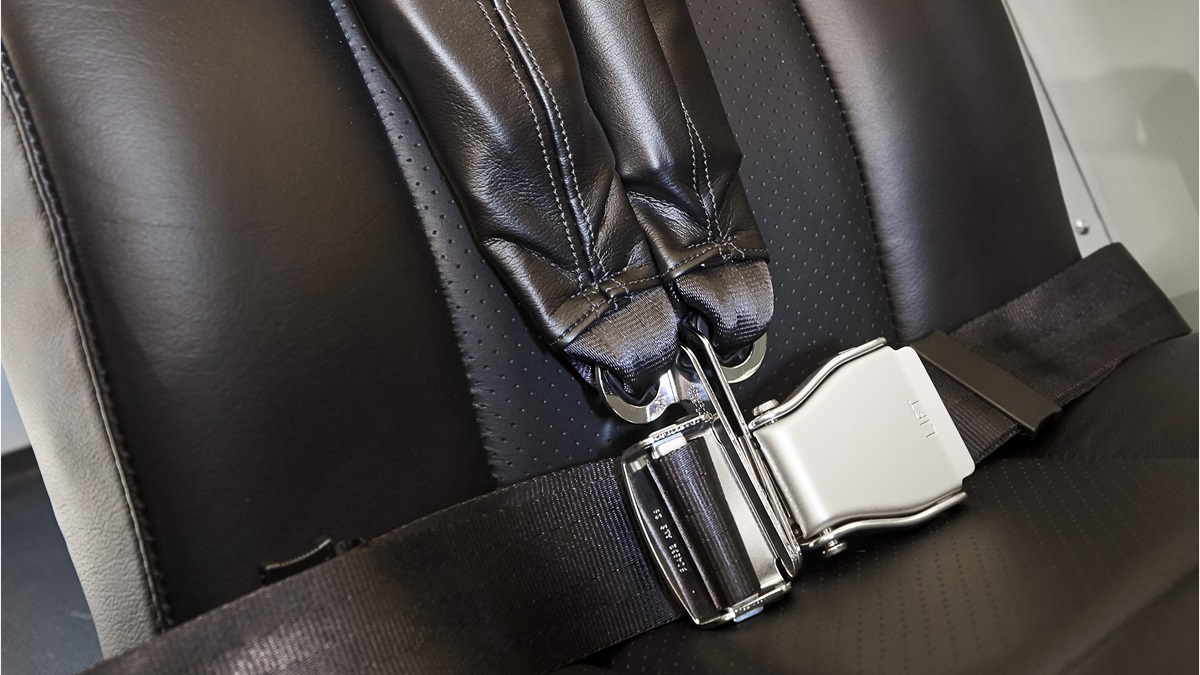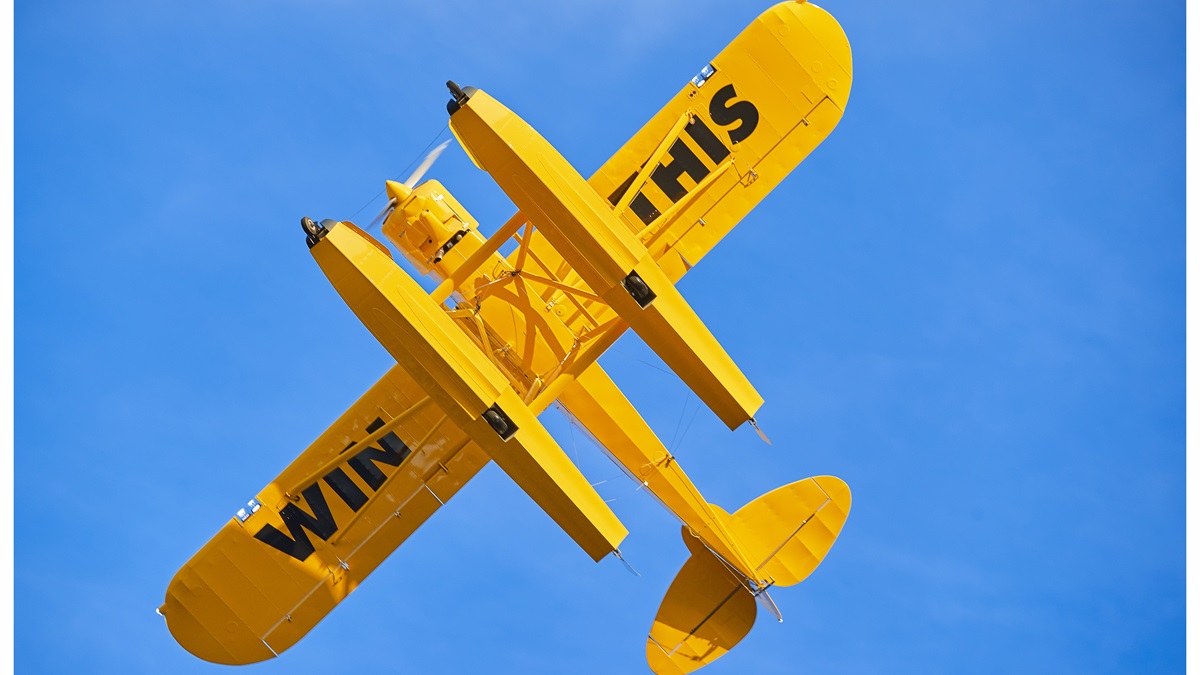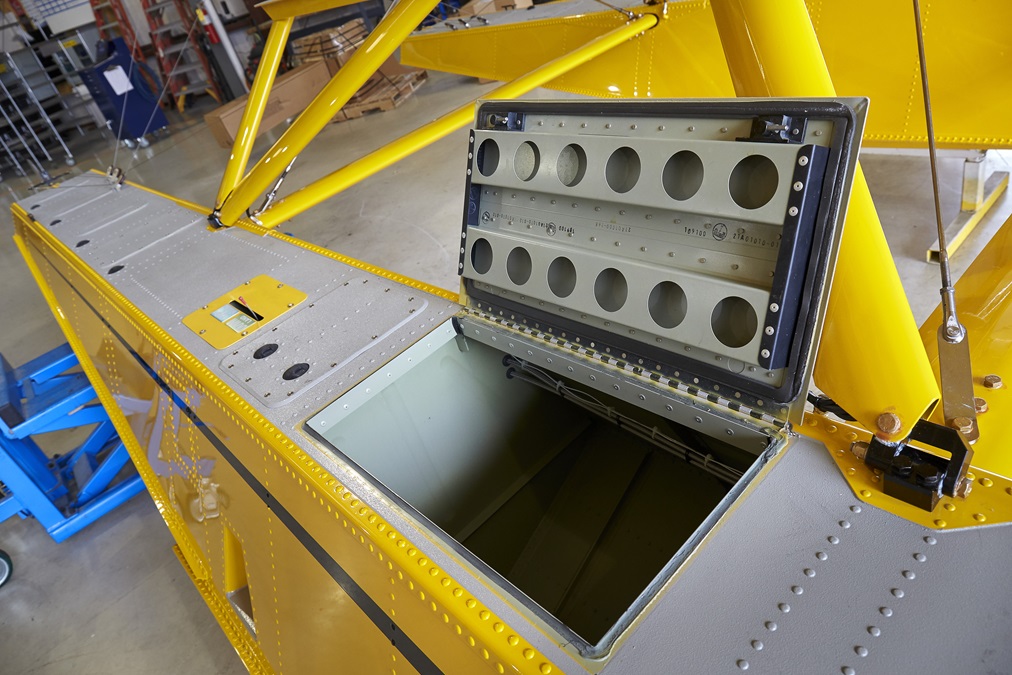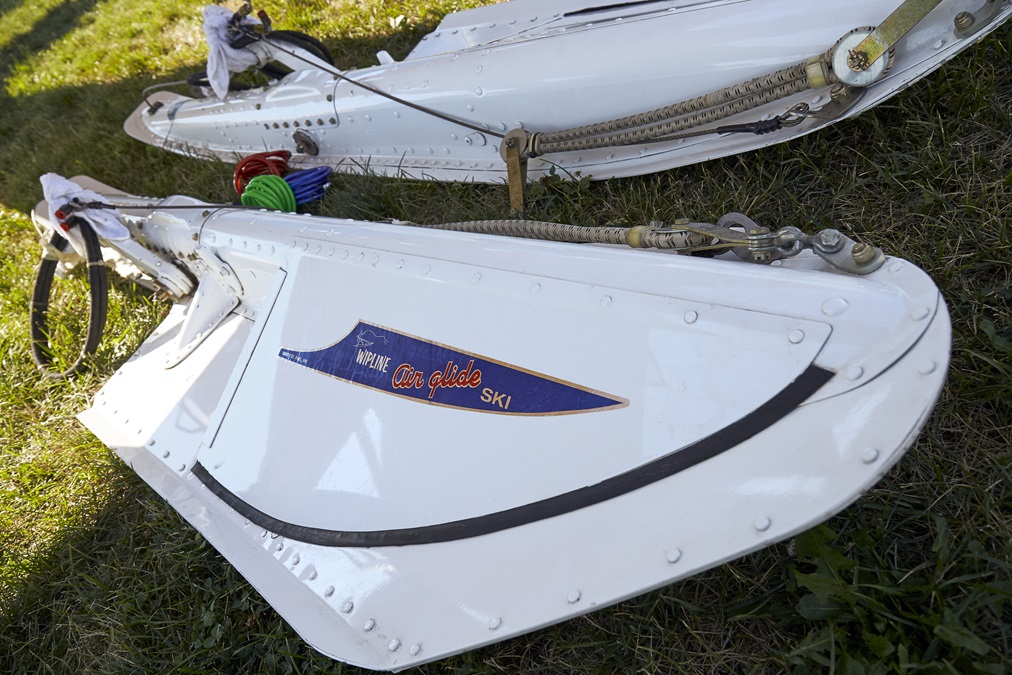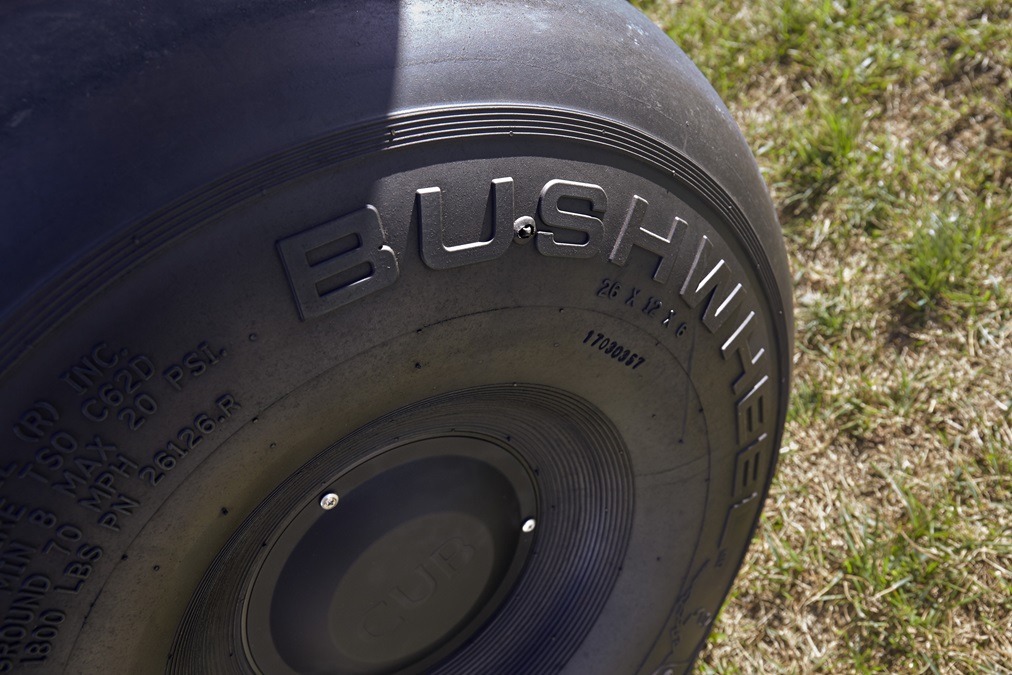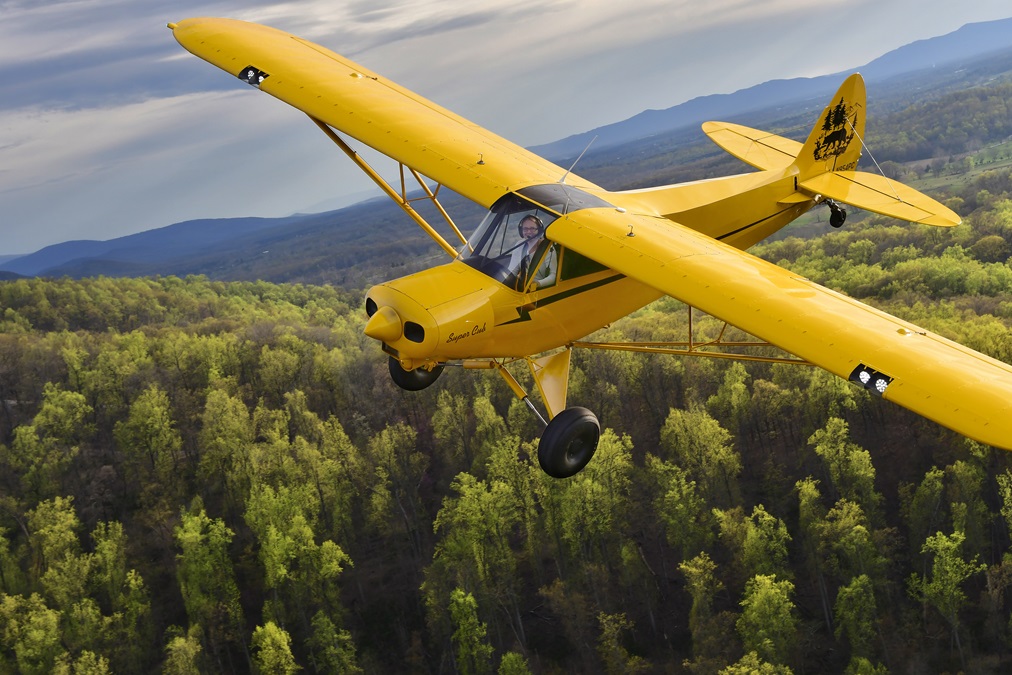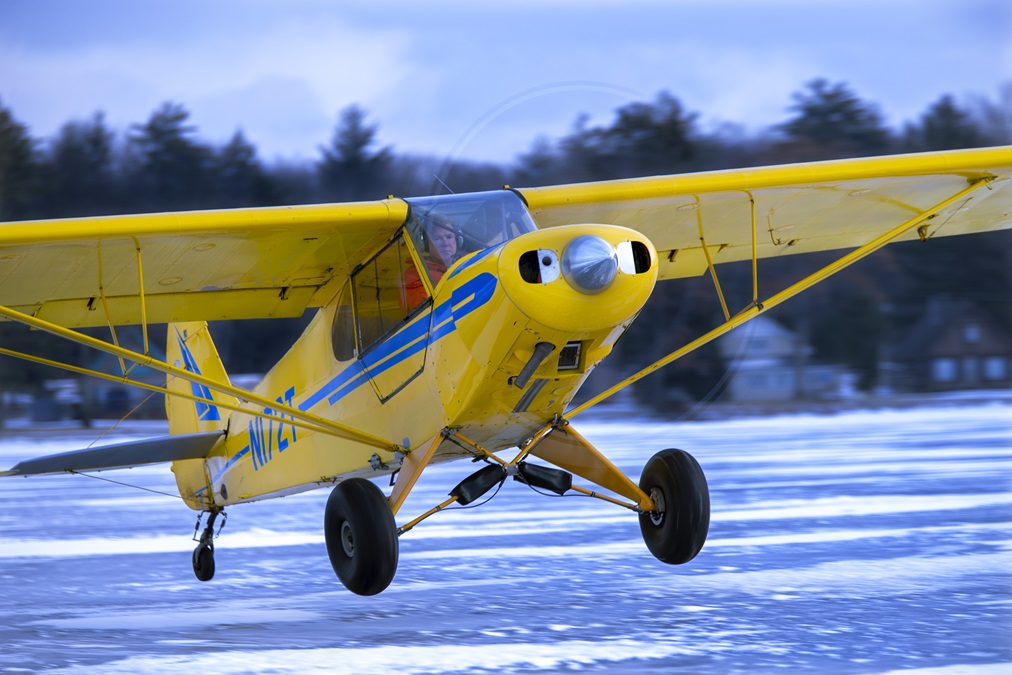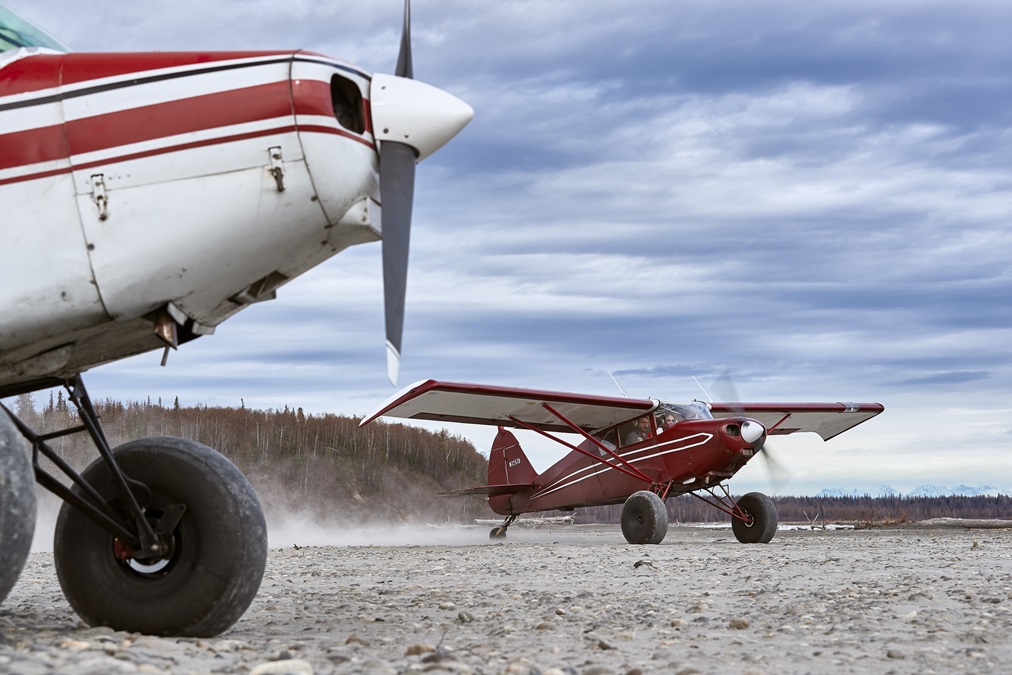Sweepstakes Super Cub: New lease on life
Transforming airplanes and pilots
Meanwhile, I was in a rut. I hadn’t earned a new certificate or rating since my CFI in 2011, and I was content to fly my Cessna 170B within a two-hour radius of home base.
We both got a new lease on our aviation lives when AOPA hatched its idea for an over-the-top sweepstakes airplane giveaway—a modernized Super Cub that would come with tundra tires, amphibious floats, and hydraulic skis. The completely transformed Super Cub is ready to jumpstart the lucky winner’s aviation adventurers—it could be yours this summer.
In the hands of Roger and Darin Meggers, the father-son craftsmen of Baker Air Service in Baker, Montana, the Piper PA–18 would become not only an airworthy Super Cub, but a true work of art. Roger had purchased the Super Cub from a mechanic a few years after it had been wrecked in 1997, and it sat in his hangar until they started the sweepstakes project in 2017.
Roger has restored more than 40 Super Cubs, and he and his son had previously earned top awards at EAA AirVenture and Sentimental Journey for restoring Super Cub number 1 to original condition. The two refurbished the Sweepstakes Super Cub to fit like a custom-made glove; it’s impeccably rigged and balanced, and as sleek and shiny as a composite aircraft. No detail was overlooked. After more than 2,000 hours of restoration, the Super Cub flew perfectly on its first test flight April 6, 2018, a bone-chilling 18-degree Fahrenheit day in eastern Montana.
Performance-enhancing mods
With more than 30 supplemental type certificated modifications, this PA–18 blends the best of the classic Super Cub with top performance-enhancing upgrades.
The Super Cub rolled out of the Piper factory in 1954 with a 135-horsepower engine, but now features a Lycoming O-320 160-horsepower engine with an electronic ignition system from Electroair. The extra horsepower increases the Super Cub’s performance on land and water, and gives it more hauling power to accommodate the heavier loads it can carry, thanks to Wipaire’s gross weight increase to 2,000 pounds. The electronic ignition system keeps the Super Cub starting and running smoothly at all altitudes with just the push of a button (I love the keyless start).
To further enhance performance, we turned to companies that specialize in modifications of the popular legacy airplane. With sturdier and in some cases lighter replacement airframe parts from Univair and F. Atlee Dodge, the airplane came in about 150 pounds heavier than original. CubCrafters, long known as a manufacturer of high-performance Super Cub variants, provided several modifications to increase the sweepstakes airplane’s safety margin, including a vortex generator kit with tail strake to improve controllability at slow speeds and reduce stall speeds in the aircraft (when properly rigged and loaded).
The Super Cub also has excellent range—it might be able to stay aloft longer than you! Dakota Cub Aircraft’s two 24-gallon fuel tanks carry 46 gallons of usable fuel. At an average fuel burn of about 8.5 gallons per hour, that’s just under five hours of flight time with day-VFR reserves.
Modern cockpit
With a glass panel, carbon-fiber interior, and luxury leather seats, this isn’t a typical Cub cockpit.
The panel features the touch-screen Garmin aera 660, two G5 electronic flight instruments, the GTR 225 com radio, and GTX 345 transponder that provides Automatic Dependent Surveillance-Broadcast In and Out. The GTX 345 provides weather and traffic information that is displayed on the aera 660, improving situational awareness.
The engine instruments and fuel gauges are combined into J.P. Instruments’ EDM 900 all-in-one digital engine monitor. CiES electronic fuel sending units transmit precise fuel levels from the fuel tanks to the EDM 900, so that with a glance at the panel, the pilot can quickly see fuel quantity, fuel burn, and endurance.
PS Engineering’s PM3000A, combined with two Bose A20 active noise reduction headsets, ensure clear communications in the noisy cockpit. Play music off a smartphone or tablet and listen to it through the headsets’ Bluetooth function—and when the electronic devices’ batteries fade, charge them with any of the six USB charging ports from Mid-Continent Instruments Co.’s True Blue Power division (two of the ports are integrated with a digital clock in the left wing root).
If you’re thinking, “That’s a lot to pack in a Super Cub panel,” you’re right, and it wasn’t easy. After more than 300 hours of design and labor, the professionals at Aerotronics created a panel that lays out the modern avionics in a six-pack instrument scan. Look at the instruments when needed but otherwise enjoy the largely unobstructed view outside—that’s what Super Cub flying is about!
We also brought the latest safety features to the cockpit with AmSafe’s airbag seat belts that deploy away from the pilot and passenger. In addition, LP Aero Plastics’ tinted windscreen, skylight, and windows are filter UV light to help prevent sunburns.
The panel and throttle quadrant are aluminum overlaid with carbon fiber to match the black carbon fiber floor and gray side panels from Carbon Concepts. Add in the black perforated leather from Perrone Aerospace Performance Leathers & Textiles covering the seats, and the interior looks more like a luxury car than a two-place bush plane. It feels like one, too. Airtex Interiors padded the seats to provide back support so that during long flights (think eight hours), the bum and back remain comfortable.
Tail feathers
Consolidated Aircraft Coating’s poly-fiber fabric with high-gloss finish on the sweepstakes Super Cub is a magnet for pilots, most of whom can’t help but give what they hope will be their airplane a love pat.
The Lock Haven Yellow airplane with signature black Piper lightning bolt is easy to spot in the air, not only because of the colors but because of AeroLEDS wig-wag landing lights in each wing. On the ground, the Sweepstakes Super Cub can be easily singled out with its unique tail art. Designed by Cris Lacognata of Scheme Designers, the tail art features a rustic scene with a mountain, lake, and bear—all a nod to this model’s backcountry roots.
Gear galore
For the first time in AOPA’s sweepstakes history, the airplane will come with three sets of landing gear: It will be given away on Wipaire’s Wipline 2100 amphibious floats and come with their Wipline AirGlide hydraulic skis and 26-inch tundra tires from Alaskan Bushwheels.
With amphibious floats, the Super Cub becomes more versatile and able to land on water or at airports, making trips across the country easier from a fuel-planning standpoint. Along with the floats, the Super Cub is equipped with Wipaire’s laser gear advisory system. The system activates about 400 feet above the ground, and the laser checks the landing surface (land or water) and gear position to see if they match. If they don’t, about 50 feet above the ground, the system will remind the pilot to “check gear.” The laser system is an added safety benefit because gear position with amphibious floats is critical: Landing on water with the wheels extended could be catastrophic. (If you win the airplane but don’t have a seaplane rating, ProMark Aviation in Texas will provide training.)
The tundra tires and skis attach to CubCrafters’ three-inch extended landing gear and Burl’s Aircraft’s Alpha-Omega Suspension System. Developed and tested in Alaska, AOSS has been flown in weather as cold as minus 40 degrees Fahrenheit. The suspension system doesn’t use bungees, hydraulics, or oil. Instead, solid yet deformable polymers in the cylinders help eliminate bouncing upon landing and provide cushioning for the airframe when operating on rough terrain.
Because the Super Cub is designed with the backcountry in mind, we wanted to provide extra gear to make sure you could get out of those off-the-grid locations should a mechanical problem arise. A portable Snap-on toolkit that fits perfectly in the baggage compartment is filled with wrenches, screwdrivers and flatheads, pliers, sockets, miniature pick set, mirror, light, hammer, safety wire twisting pliers, and more.
Aviation adventures
When the Super Cub started its transformation in 2017, I began my own aviation makeover to gain the experience I needed to ferry the sweepstakes airplane to events around and the country and to experience the different kinds of flying and remote locations that are hallmarks of Super Cub operations. Because the sweepstakes aircraft’s restoration would take a full year, I turned to stand-in Super Cubs and Cub variants like the PA–12 and PA–22 to complete some of the training before hopping in N954PC.
Lunch fly-outs took on new meaning during my seaplane training with ProMark Aviation: Land on a river, dock, and then walk up a hill to eat at a restaurant while overlooking the Piper PA–12 amphibious trainer. Puttering around on water after landing is simply more relaxing than any other type of aviation I’ve experienced, even soaring. Splashing down on the Mississippi River and cruising 200 feet above the Atlantic Ocean, just below John F. Kennedy International’s Class B airspace along Long Island, are experiences that wouldn’t have happened without training for the seaplane rating or ferrying a Super Cub on floats around the country.
To experience hard-core winter flying, I headed to Michigan and Alaska. Landing a Super Cub on tundra tires on Michigan’s frozen lakes Mitchell and Cadillac was nerve-wracking, but the feelings quickly turned to excitement with each touch and go. Still in search of snow and skiplane flying, I flew a tailwheel-converted PA–22 on hydraulic skis around Alaska’s Talkeetna Mountains and Glacier. An overcast sky created flat light conditions, altering our depth perception and making it unsafe for glacier landings. However, I learned firsthand that manually pumping hydraulic skis up and down is difficult (thankfully the Sweepstakes Super Cub’s hydraulic skis are electrically actuated). After scrapping glacier landings, I turned to a favorite pilot pastime in The Last Frontier: gravel bar hopping. A PA–22 on tundra tires performs well, but my instructor and I passed up several gravel bars perfect for a Super Cub but too short for the PA–22.
The Sweepstakes Super Cub’s restoration was finished in time for me to enjoy training in it through a fundamentals of mountain flying course with McCall Mountain/Canyon Flying Seminars in Idaho. I could feel the temperature drop while approaching and crossing jagged, snow-capped mountain peaks and then rise again as I approached a short backcountry grass strip deep in a valley near the Hells Canyon Wilderness Area. The confidence boost in the Super Cub allowed me to tackle gusty winds and long ferry flights, while the new skills opened opportunities to land my Cessna 170B at tricky grass strips tucked in valleys back East that I wouldn’t have attempted before.
The biggest reward of stretching my wings through the sweepstakes project has been all of you: chatting at shows and events, hearing your past Super Cub flying experiences and future dreams (once you win it), and taking part in practical jokes with you at fuel stops as I crisscrossed the country. I still chuckle about helping an AOPA member prank his son (also a pilot and member) in October. During a fuel stop in Tupelo, Mississippi, I took the father’s picture with the Super Cub, so that he could text it to his son with the message that I was delivering the airplane to the winner. His son called immediately. Laughing, the father declined the call and let his son wait in anticipation a bit before telling him the truth.
I will miss flying the Super Cub a couple thousand feet above the ground with the window open, my ponytail blowing in the breeze. But, my aviation exploring will continue in other airplanes. Now, it’s time for your Sweepstakes Super Cub adventures to begin. Whether you already have thousands of hours in Super Cubs or are a newbie, this transformed airplane has the power to transform your flying.
Enjoy it!

